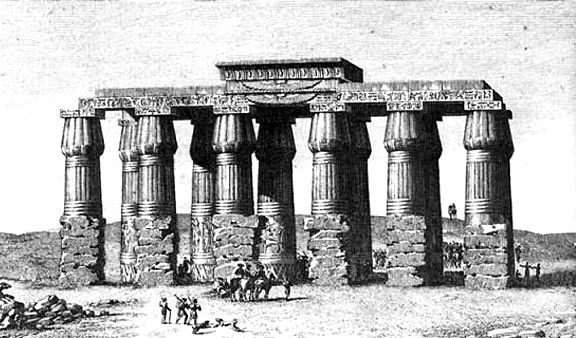Athena Review Image Archive ™
Hermopolis: Temple Portico (French Exped. 1799) .

Temple Portico at Hermopolis (drawing by Vivant Denon, in Description de l'Egypte 1802).
During the Ptolemaic and Roman periods, the city held a large Greek settlement, with a Greek cemetery at nearby Tuna el-Gebel. A large Roman basilica or hall of justice was found in Hermopolis, the only example of its kind in Egypt (Baines and Malek 1988).
The French expedition visited the ruins of Hermopolis in 1799. The artist Vivant Denon sketched the remains of a Graeco-Eyptian temple portico with sculptured columns and capitals in the form of papyrus plants with unopened umbels or flower clusters. This typical Egyptian motif is also seen at Philae, Edfu, Luxor, and Kom Ombo, among other sites in Upper Egypt.
Copyright © 1996-2019 Rust Family Foundation (All Rights Reserved).